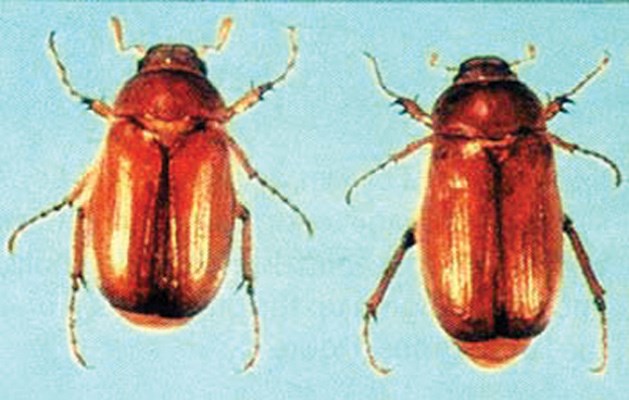GREEN grass has been the work horse of the suburban home since the 1950s, but the day of the lawn may be coming to an end.
Water shortages, concern over pesticide damage to the environment, less time for lawn maintenance and now the invasion of the European chafer beetle are signalling a need for change in the way we view the traditional suburban lawn.
The European chafer (Rhizotrogus majalis) is a beetle native to Europe that was found in the U.S. around 1940. The chafer has spread across parts of the eastern U.S. and north into central Canada. It was found in our region around 2001 and has now spread into Vancouver, Coquitlam, Richmond, North Delta, Port Moody and the North Shore.
Damage from the chafer is caused by the larval stage or white grub that eats roots of most types of lawn grass. The chafer will also eat potatoes, corn, blueberries and some conifers. The chafer can damage nursery plants by eating their root system. Suffice to say it is a serous pest for horticulture, agriculture and the nursery industry.
The adult chafer beetle is tan coloured and about 12 millimetres long. The grub (larval stage) found in the soil has a white, C-shaped body with brown head and grows about 25 mm long. A magnifying hand lens or microscope is required to accurately distinguish the chafer grub from other pests like June beetles. Damage caused by the chafer grub shows as dead grass patches in spring, slowed growth that eventually dies and brown spots that appear during drought. But the real damage to lawns is caused by secondary pests like crows, raccoons, skunks and small rodents that dig up the lawn, looking to eat the tasty white grub. Entire lawns can be completely destroyed by the digging activities of foraging animals searching for grubs.
It is no stretch to say that because the classic residential lawn has been so widely planted, that there is plenty of food for the chafer beetle and the more we load the dinner plate with lawn grass the larger the population will grow. Some lawn professionals recommend that broad-spectrum pesticides (kills all insects) that persist (stays active) in the soil for a period of time such as chlorpyrifos, imidacloprid, thiamethoxam, diazinon, carbaryl or trichlorfon be sprayed on the lawn from July until October to kill grubs when they are active in the lawn. It is important to note the only effective time to spray this pest is when the grubs are in the lawn in the larval stage. However, pesticides do not completely cure the problem because pesticides kill only a percentage of the population and pesticides do not prevent adults from re-laying eggs. There have also been reports of the chafer beetle's ability to genetically mutate resistance to pesticides making pesticide applications a poisonous short-term control option.
The use of parasitic nematodes is also recommended for control of the chafer if applied in late July after eggs have hatched when the young larva are most susceptible to nematode attack. It is important to understand that nematodes can only be sprayed on the lawn in the evening or on cloudy days since they are killed by ultraviolet light. The lawn must be watered before application and the nematodes must be watered into the lawn to allow them to swim through soil water to seek out the grubs where they enter the grub's body and kill it from the inside. Nematodes are somewhat effective in controlling the chafer but won't completely eliminate the pest and like pesticides, nematodes must be applied year after year as long as the chafer lives in the neighbourhood.
Growing healthy strong grass has also been shown to reduce but not eliminate chafer attack. Cutting the grass longer helps since chafer adults prefer short grass to lay their eggs in. Proper lawn fertilization, aeration, dethatching, watering and liming can help the grass grow strong enough to withstand chafer attack. But the pest can never be totally eradicated from infected lawns. I could find no information on whether or not letting the grass go dormant in summer has any controlling effect on chafer grubs.
For my money, the only effective, long-term way to prevent chafer grub infestation is to convert infected grass to another type of planting like groundcovers, shrub beds, veggie gardens, play areas, patios, ponds or anything non-lawn. Keeping in mind that chafer grubs may still be in the soil if new plantings are installed. For me the chafer infestation is a symptom of a larger problem with the classic suburban lawn, there simply is too much grass growing in the wrong places and our overreliance on lawns to landscape our homes has now come back to bite us in the root.
Todd Major is a journeyman horticulturist, garden designer, writer, consultant and organic advocate. For advice contact him at [email protected].



